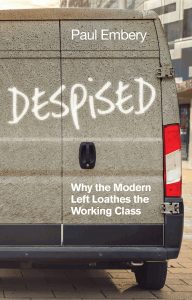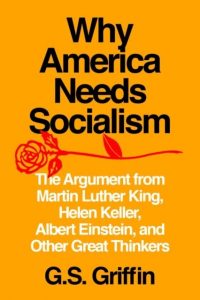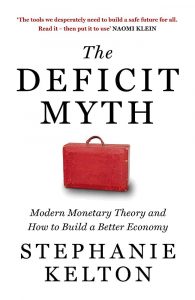Book Reviews
 Despised. Why the Modern Left Loathes the Working Class. Paul Embery, Polity, 2021
Despised. Why the Modern Left Loathes the Working Class. Paul Embery, Polity, 2021
This is a relatively short book but halfway through it I wondered if I could bear reading any more. Why? Well, it’s certainly not badly written or hard going. In fact it’s written in a congenially informal style that makes it easy to read and understand. But the trouble (or one of its troubles) is that it’s endlessly repetitive, simply going over the same ground time and time again, repeating the same polemic and even using the same words to express it.
What does it actually argue? Basically that the Labour Party is finished if it doesn’t manage to bring back to its fold the so-called ‘red wall’ of voters who deserted it in the Brexit referendum and in the 2019 General Election. These are the voters the author identifies as the ‘working class’ (defined as those who do ‘physical labour or work in blue-collar industries, factories, call centres, retail or frontline public services’) who have traditionally been the backbone of Labour’s support in urban Britain and from which background, as he frequently reminds us, he himself comes.
These people, Embery contends, have moved away from Labour because it has become a Party dominated by a middle-class elite hostile to traditional working-class values and favourable to globalisation, mass immigration and identity politics. According to the author, it needs to move back to embrace and represent those working-class values and only by so doing will it win back that core of traditional support and again become an electoral force. The words he uses to describe those ‘values’ are among those repeated over and over again throughout, giving this book its tiresomely repetitive feel: patriotism, tradition, custom, order, stability, flag, family, faith, identity, community, belonging.
Almost equally countless are his repetitions of a particular set of tired, hackneyed terms often used by those on the right of the capitalist political spectrum to seek to vilify their opponents: liberal wokedom, virtue signalling, identity politics, woke left, cosmopolitan elite, progressivism – or more or less any combination of these words. These are the terms he uses to denote forces he sees as standing in the way of those traditional working-class values.
Yet this book is a funny mixture. Its writer is ‘a firefighter and trade union activist’ and an adherent of so-called ‘blue Labour’. He proclaims himself ‘left-wing’ and makes it clear that he is on the side of the workers in their endeavours to improve pay and conditions. So it can be said that he recognises the struggle for a bigger share of the cake that the capitalist system creates between those who own most of the wealth and those who own little but their ability to work. But his solution is for workers to be represented by a Party, a reformed Labour Party, that tilts things in their direction and opposes the encroachments of global capital on their economic wellbeing. He proclaims himself fiercely pro-Brexit, seeing that vote as an indication that the working class (in his definition) was fed up with the ‘shackles of the EU’, with the ‘woke’ culture of Labour’s political elite, with the Party’s failure to respect workers’ traditional culture and values (patriotism, etc.) and with its embrace of ‘progressivism’, globalisation and ‘neo-liberal’ economic policies.
Some of this could be seen as well meaning, but it asks all the wrong questions and buys into a whole range of myths about class, race, the nature of government and much else. Above all it entirely misses the point about the struggle between workers and capitalists. It makes no sense to qualify as working class only those who do manual work or are in lower paid jobs. The reality, as even at one point the author comes close to recognising (but then dismisses), is that all those who sell their energies for a wage or salary are workers. They are all in the same basic position vis-à-vis their employer and all susceptible to losing their employment and so their means of living if the market determines it. No government, left, right or centre, can do much about that even if they would like to, for in the final analysis governments exist to administer the buying and selling system on behalf of the owners of capital and, even if they are able to take over some aspects of it (as suggested by Embery), they cannot control it, as has been shown time and time again by the continuous ups and downs brought about by what Marx called ‘the anarchy of the market’.
So though the author calls himself ‘a democratic socialist’ and says he wants ‘to address the injustices of the world’, his conception of how society should be run is a contradictory mishmash. He advocates a ‘strengthening of the nation state’, state control of utilities and such like, a government policy of ‘jobs for everyone’ and economic protectionism, yet at the same time he calls for internationalism, for a ‘flourishing private sector’ and insists that markets are ‘essential to the functioning of a free and democratic society’.
The author proclaims himself a socialist but would do better to look at a more meaningful conception of socialism, one that aims for a world without the market system, without buying and selling, without money or wages, and based on voluntary work, common ownership and democratic control. In such a society the narrow ‘cultural’ and class differences he sees as fundamental between people of one kind of background and another, between people of one country of origin or another, will disappear and give way to positive cultural diversity and real economic equality based on a system of from each according to ability, to each according to need.
HOWARD MOSS
 Why America Needs Socialism. G.S. Griffin, Ig Publishing, New York, 2019
Why America Needs Socialism. G.S. Griffin, Ig Publishing, New York, 2019
It wasn’t a bad idea to introduce socialism to Americans prejudiced against it, by quoting people and writers they know of such as Einstein, Martin Luther King, Helen Keller, Mark Twain, Jack London, Upton Sinclair, George Orwell, all of whom made criticisms of capitalism as a system based on inequality and production for profit. Technically, this is the invalid ‘argument from authority’ but Griffin puts their quotes to good use to back up his argument against capitalism, at least against private capitalism.
The facts he presents are referenced in 70 pages of footnotes. All the same, there are a few inaccuracies. In 1936 the Spanish people did not rise up against the fascist dictator Franco; Franco rose up against the elected Republican government. The Mondragon cooperative had nothing to do with any Marxist tradition in Spain; it was set up under Franco by a Catholic priest.
When it comes to describing the alternative to capitalism, what Griffin (a member of the Democratic Socialists of America) sees as socialism, the book fails. He describes socialism as a society ‘full of cooperatives’; all places of work – factories, farms, offices, shops, transport, hospitals, schools, colleges, theatres – are to be owned and run by those working in them. This would not be socialism, as in a socialist society the means of life would be owned by society as a whole and not by those who worked in them. Society-wide common ownership allows production to be geared directly to meeting people’s needs; the question to solve is then not to sell what has been produced but how to distribute it to where it is needed.
Certainly, in socialism workplaces will be democratically run by those working in them but they won’t be their property. Griffin’s scheme, on the other hand, involves worker-owned cooperatives producing for sale on a market, which means that they will have to at least break even, with money spent being balanced by money from sales, while free services will have to be financed from taxes. The objection to this is not that it wouldn’t be better than what exists now but that it wouldn’t work, at least not as intended. Market forces would still control things and, since in practice the cooperatives would have to aim to make a monetary surplus (aka profit), eventually lead to a return to capitalism as we know it.
ALB
 The deficit myth: modern monetary theory and how to build a better economy. Stephanie Kelton, John Murray Publishers, 2020
The deficit myth: modern monetary theory and how to build a better economy. Stephanie Kelton, John Murray Publishers, 2020
You may have read or heard about Modern Monetary Theory (MMT), which has become popular in some left-wing circles as a means for justifying government spending programmes. In essence, it affirms that any state that can issue its own inconvertible (fiat) currency, cannot go bankrupt (so long as it only borrows in its own currency).
This leads to a model of the state in which it is not reliant on taxation nor borrowing to spend. Taxes, for MMT, are merely a means for driving demand for the state-issued currency, and any money paid in tax is effectively destroyed. All state spending is simply the issuing of newly created money. The national debt is simply a different form of money that attracts interest in the normal money the state issues. The national debt, in this model, is merely a means to regulate interest rates.
The only limit to state spending, for MMT, is the availability of resources in the real economy. These limits only become evident through the appearance of inflation: prices would begin to rise as demand from government spending outstripped supply. The method that Kelton promotes to regulate this spending is a government jobs guarantee scheme, so that full employment is maintained at all times. If private sector employment drops, the government jobs scheme kicks in to offer employment, at a minimum rate. As the economy recovers, people leave the job scheme, attracted by private sector wages.
This is, then, unlike the Keynsian prescription, in that MMT encourages government spending at any stage of the business cycle, rather than cutting spending during the upswing and borrowing during the recession.
The core premise of MMT is banally true: the state can always issue more money in its own currency. There is a question of just how much scope there is for increasing state spending before inflation kicks in, and Kelton certainly seems to write a lot of cheques against that spending capacity: healthcare, university education, pensions, etc.
She seems to imply that the current models, wherein the state is assumed to be funded through taxation and borrowing, are simply an error, rather than representing the ideological form of the interests of the owners of money and capital.
Before 1971 other currencies had a fixed rate of exchange with the dollar and the dollar was convertible into gold at the fixed rate of $35 an ounce. This provided an indirect link between a currency and gold. The currencies themselves, however, were not convertible into gold and states could issue as much as they wanted. To the extent that they over-issued them this led to inflation and in the end to a formal devaluation of their exchange rate with the dollar.
When this ‘gold exchange standard’ was abandoned by the US in 1971 the commodity origin of currencies was completely disguised, giving rise to the illusion on which MMT is based that money is entirely a creation of a state. Since then currencies have floated up and down against each other in accordance with the demand for them, for instance to pay for imports. An increase in their supply was still liable, if excessive, to cause inflation. The result wasn’t a formal devaluation, simply a downwards float vis-à-vis other currencies.
To an extent, the commodity origin is still relevant because the state monopoly of fiat currency is not absolute. People can abandon pounds or dollars by buying foreign currencies or value-bearing commodities (in a crisis, the price of gold shoots up, as people buy gold to try and protect the value of their assets). Contrary to Kelton’s assertion, the banks do not have to buy the national debt, they have other options, but it has to remain attractive, and the currency has to retain confidence.
Further, her dismissal of ‘crowding out’ theory only goes so far. The usual idea of crowding out is that government borrowing attracts investable capital and pushes up interest rates, making it harder for private sector businesses to find investment and thus damping down overall economic growth. Kelton argues that the state can effectively set its own interest rates for borrowing, and can thus borrow and hold down interest rates at the same time.
To an extent that is true, but only within broad limits governed by general confidence in the security of the government debt. With international money markets, setting the interest rate too low or too high would make the currency a target for speculation, as people would move their assets into or out of the country. Further, leaving interest rates to one side, as the state can only consume resources (as a state) all the resources employed by the state cannot be employed by private capital to produce profits. Whether this transfer really comes from borrowing, taxation or from creating money is moot, the fact remains that from a capitalist’s perspective, state spending is a threat to their profitability. This means less wealth overall is created for the state to commandeer.
The same can be said for a jobs guarantee. It is useful for Kelton to tell us that the US Federal Reserve sees it as part of its role to deliberately sustain a certain level of unemployment in order to control inflation. While she sees this as the result of mistaken theory, we would see it as part of the essential features of capitalism. Capitalism relies on the lash of the threat of poverty and unemployment in order to sustain its profitability for the capitalists, as well as having a buffer of laid-off workers in reserve for the next boom.
A job guarantee scheme would see wages pushed up to the point where they cut into the profits the capitalists make (and this would happen without causing inflation, since the demand would simply be transferring effective demand from one pocket to another). This would likely result in a capital strike occasioning a form of economic crisis. Just as likely, the state might be called in, as it was under the Keynesian nostrums, to regulate wages and use its job guarantee to control wage levels.
To the extent that Kelton talks about looking past money to think about real economic resources and how they can be commanded for the interests of the whole community, she is on the right path. The lever of state-issued money is insufficient. The distortion of money markets would get in the way of that. Likewise, simply seeing the problem as a misunderstanding of theory, rather than actual contesting class interests, is a greater barrier than any theory of how the state is financed.
PIK SMEET
